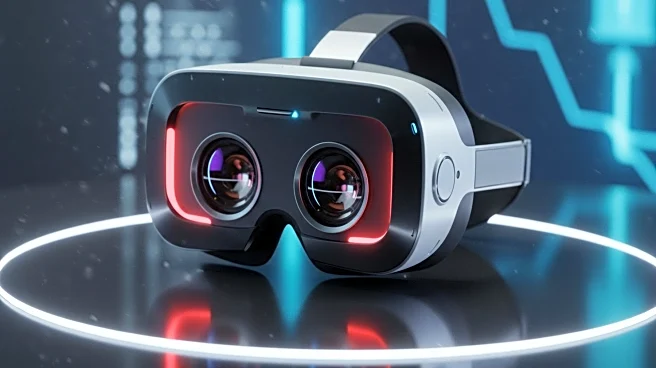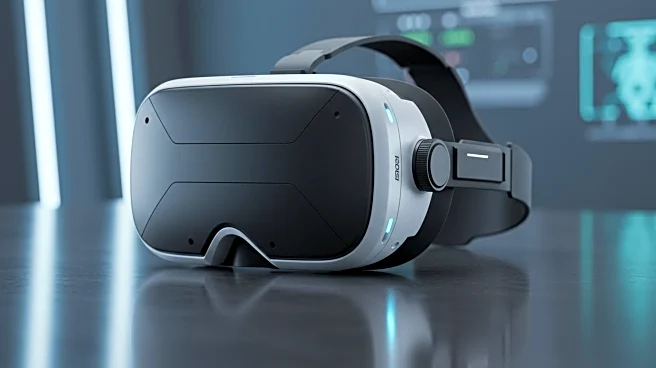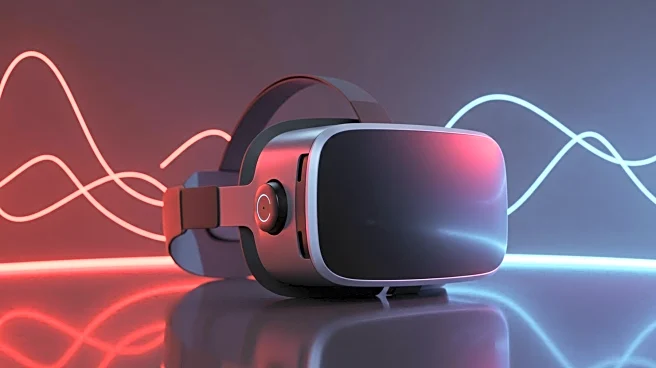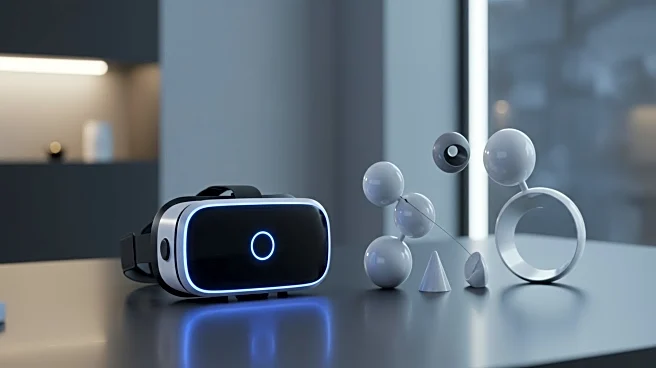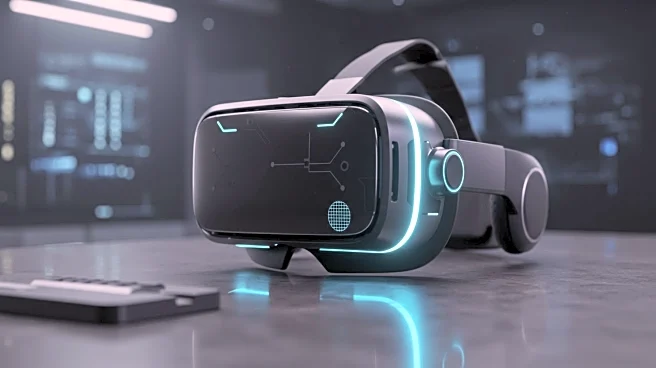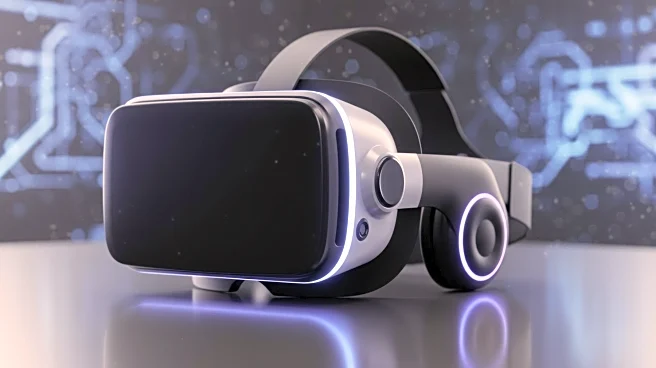What is the story about?
What's Happening?
Meta has introduced a new virtual reality prototype called Tiramisu at SIGGRAPH 2025. This prototype aims to achieve beyond-retinal resolution with high brightness and contrast, although it features a narrow field of view. Tiramisu is part of Meta's ongoing research to pass the 'Visual Turing Test,' where users cannot distinguish between real and virtual environments. The prototype boasts an angular resolution of 90 pixels per degree (PPD), a brightness of 1400 nits, and three times the contrast of the Quest 3 headset. It uses micro-OLED displays magnified over a small field of view and employs custom refractive lenses to enhance brightness and contrast. Despite its impressive visual quality, the headset is thick and heavy, requiring users to hold it up to their faces during demonstrations.
Why It's Important?
The development of Tiramisu represents a significant advancement in virtual reality technology, particularly in achieving high resolution and brightness that enhance realism. This could have substantial implications for industries relying on VR, such as gaming, training simulations, and virtual meetings. The ability to create more lifelike virtual environments may lead to increased adoption of VR technology across various sectors. However, the current limitations in field of view and headset weight suggest that further refinement is needed before practical applications can be realized. Meta's research into overcoming these challenges could pave the way for more immersive and comfortable VR experiences in the future.
What's Next?
Meta is working on a successor to Tiramisu, known as Tiramisu 2, which aims to balance resolution, brightness, and contrast with a wider field of view and reduced thickness. This next iteration is expected to offer 60 PPD and 700 nits of brightness, with a field of view of around 90 degrees. The development of Tiramisu 2 indicates Meta's commitment to refining VR technology for practical use. The company may showcase Tiramisu 2 at future events, potentially influencing the specifications of upcoming VR headsets and setting new standards for the industry.
AI Generated Content
Do you find this article useful?
